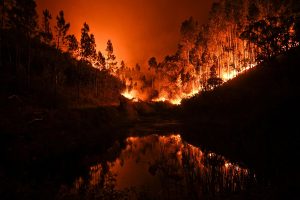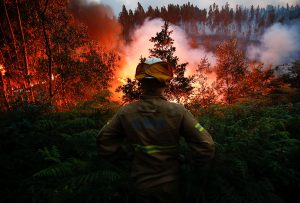The majority of water sources used for drinking water supply originate from forest watersheds but very vulnerable to wildfire. Increasing summer temperatures and beetle infestations of forests is an indicator of Climate Change, and this has contributed to more occurrences of severe wildfires as shown in figure 1. Healthy tall standing trees have continuously died under harsh conditions and later acting as fuel for the fires. Ash and runoff from a burnt landscape, as well as, fire fighting chemicals deteriorate water quality especially during high storm periods. Water providers face challenges of incurring more costs in reservoir maintenance from high sediment load, modifying treatment infrastructures and treatment processes to meet water quality standards. Therefore, stakeholders should start to collaborate to ensure proper forest management for clean water supply from watersheds. Different stakeholders include forest managers, watershed managers and water utilities should think of collaborating to find measures which could curb the impacts of wildfire. For example, they can engage in monitoring of forest land management practices, as well as, coming up with source water protection strategies during post-wildfire.


Figure 1: Deadly wildfires that happened in Portugal, 2017 (Photo credits: Alan Taylor)
